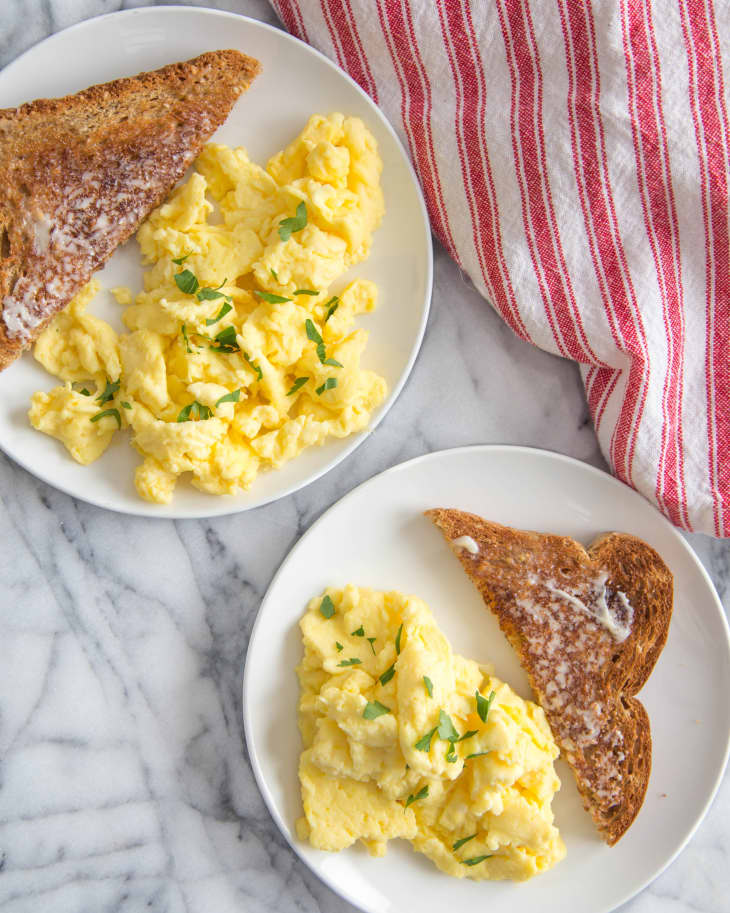How Breakfast Has Changed
Most mornings are hectic, making us lucky to grab food at all, let alone give much thought as to why we eat breakfast the way we do.
Not to get too philosophical on you or anything, but breakfast is actually a pretty good indicator of the times: how we’re living, what our culture is like, and how the economy is doing.
Breakfast Back in the Day
If breakfast never changed, we’d still be eating a heavy meal of meat and wine at 11 a.m. as they did in Middle Ages, back when eating too soon in the morning was considered gluttonous and immoral, according to Breakfast: A History by Heather Arndt Anderson.
Breakfast came into fashion by the 15th and 16th centuries, thanks to morning-food lovers, such as Francis I of France, and Queen Elizabeth of England, an early riser, Arndt Anderson says. (Although the Queen’s breakfast was still along the lines of stew with bread.) By the mid 16oos, breakfast looked more like we know it, with bacon and eggs. And by the U.S. Colonial days, ravenous businessmen too busy for lunch were eating generous morning meals. Then, by the late 1800s, cereal was invented and convenience foods were born.
And while most things we eat are a reflection of our current society, breakfast is a bit more so: “At breakfast, people tend to stick to what they know more — they’re less inclined to try new recipes when they’re in a rush to get out the door,” Arndt Anderson says. “It’s a reflection of the steadfast parts of our diet and lifestyle.”
Breakfast Today
What’s up with the state of breakfast today? Well, it’s actually shifting a lot.
Look at the numbers and it’s clear that we’re in a strong protein-heavy phase at the moment, and cereal is in a slump.
Egg sales were up 12.6 percent las year and breakfast meats were up 5 percent, according to Nielsen data — most likely owing to the Paleo protein craze, Arndt Anderson says, plus all that new research that says that cholesterol isn’t so bad after all. We haven’t tired of yogurt yet either — sales were up another 3.3 percent in 2016.
Try as we might to prep and plan to make a healthy, homemade meal at 7 a.m., let’s face it — that’s just not always realistic, which is exactly why convenience foods are also up big time. Frozen breakfast sandwich sales increased 10.5 percent, and refrigerated breakfast entrées were up 9.6 percent last year, Nielsen reports.
“We are definitely seeing a shift toward more convenient and portable breakfast foods, which essentially mirrors the uptick in snacking during, between, and as a substitution for traditional meals,” says Daniel Granderson, spokesperson for the market research firm Packaged Facts, which published a report earlier this year on U.S. breakfast trends.
The report pointed to an uptick in breakfast bars and sandwiches, with 52 percent of consumers surveyed describing the breakfast they normally have as “quick, easy, and painless.”
The Cereal Slump
Cereal would seem to fit the bill for quick, easy, and painless, but cold cereal sales, however, have gone down an average of 3 percent per year for the last three years, according to Nielsen. (Hot cereal is up 1.8 percent.)
Famously, Millennials shouldered some of the blame, as they do for many things, after a Mintel study last year found that 40 percent of those in the age group surveyed found cereal to be “inconvenient” to clean up. (Unless you have a garbage disposal, it seriously is a pain to clean up when your kids only eat half the bowl, but I digress.)
High sugar content, price, and the general broadening of our palates are probably the more likely culprits, as we were quick to point out after the report.
But that doesn’t mean cereal is doomed: “If you look at broad food trends, things tend to go in cycles,” Arndt Anderson tells us.
What’s Next for Breakfast?
“Right now, people have it in their head that grains are bad for us. There’s a rise in self-diagnosis in gluten-sensitivity, as well as Paleo dieting — people are always looking for the silver bullet. But back in the 1800s, grains were the silver bullet,” she points out.
So what will be the next big thing? If she had to look in her breakfast crystal ball, Arndt Anderson says she bets more fast-food places will follow in McDonald’s footsteps, adopting all-day breakfast menus. “It’s a reliable source of income — during rough economic times, it’s the most affordable meal to eat out.”
Also watch out for more savory protein bars instead of just the same-old peanut butter-chocolate chip, maple, or other standard-issue morning flavors. “A lot of people don’t like sweet foods for breakfast, and they’ve been left out of a lot of the convenience market,” she says.
Chicken Parm granola bar, anyone? Okay, maybe not, but tell us what you’re eating for breakfast these days in the comments.
